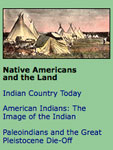Spiro Mounds [OK]
Today, the Spiro site and artifacts are among Oklahoma's richest cultural resources. This archaeological site includes the remains of a village and 11 earthen mounds. Although various groups of people had camped on or near the Spiro area since early prehistoric times, the location did not become a permanent settlement until approximately A.D. 600. Spiro Mounds was renowned in southeastern North America between A.D. 900 and circa 1400, when Spiro's inhabitants developed political, religious, and economic institutions with far-reaching influence on societies from the Plains and the Mississippi Valley to much of what is now the southeastern United States.
The site offers exhibits.

